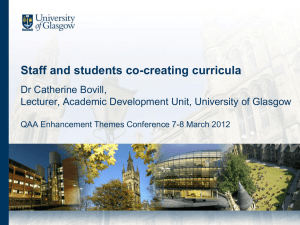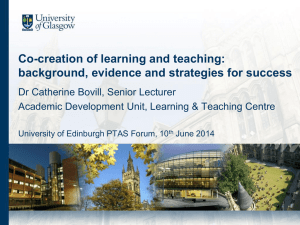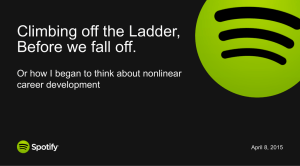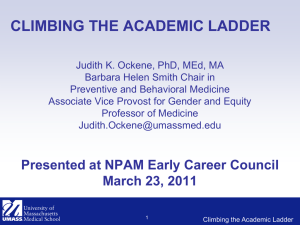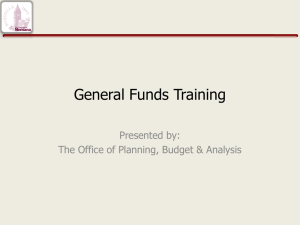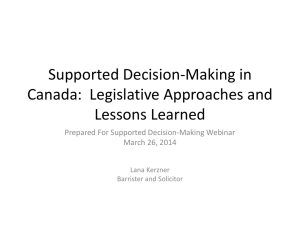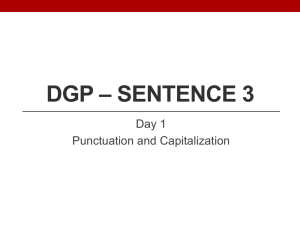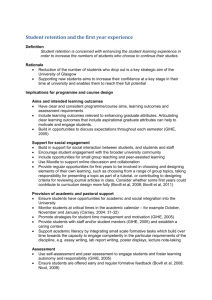Students as Co-creators of Curricula
advertisement
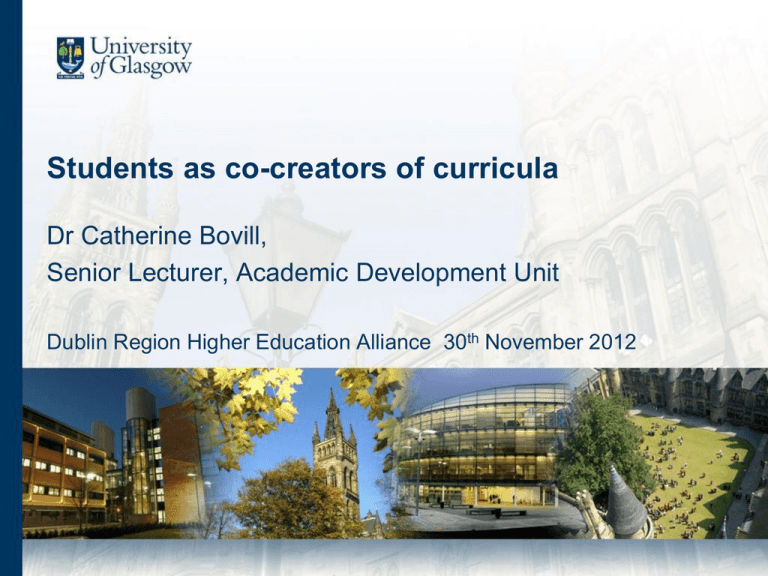
Students as co-creators of curricula Dr Catherine Bovill, Senior Lecturer, Academic Development Unit Dublin Region Higher Education Alliance 30th November 2012 Overview Background and why co-create curricula? A ladder model to explore possible and desirable levels of participation The importance of context Key design decisions made by staff Implications First year as step 1 on a ladder Retention, engagement and empowerment Academic and social integration (Tinto, 1987) Importance of early feedback, active learning, group work (Bovill et al, 2008) Developing academic learning skills (Harvey et al, 2006) Need good teachers in first year What do we mean by ‘curriculum’? Fraser & Bosanquet’s (2006) curriculum definitions a) Structure and content of a unit b) Structure and content of a programme of study c) The students’ experience of learning d) A dynamic and interactive process of teaching and learning (p272) Background to co-creating curric Students as participants, researchers, change agents, cocreators, co-producers… (Bovill et al, 2011& 2009; Dunne & Zandstra, 2011; McCulloch, 2009; Neary, 2010; SFC, 2008) Influence of critical pedagogy and student voice in schools (Cook-Sather, 2007; Darder et al, 2003; Fielding, 2004; Giroux, 1983; Rogers and Freiberg, 1969) Why would you co-create curricula? “My course is broken” My students are not engaged I want to make my classroom more democratic The benefits look worth exploring The university is going through a structural change There is a small amount of funding available Student benefits Enhanced meta-cognitive understanding of the learning process collective and individual responsibility group cohesion autonomy and self-directed learning confidence and motivation Enhanced student performance in assessments Enhanced meta-cognitive understanding of the teaching process (See for e.g. Bovill et al 2011; Delpish et al, 2011; Mihans et al, 2008) Staff outcomes • Risky / nerve wracking • Intense / demanding • Enhanced meta-cognitive understanding of the learning and teaching process • Rewarding experience from genuine dialogue with students and witnessing benefits for students • Transformatory Ladder of student participation in curriculum design Students in control Student control of some areas of choice Students control of prescribed areas Wide choice from prescribed choices Limited choice from prescribed choices Participation claimed, tutor in control Dictated curriculum – no interaction Bovill & Bulley, (2011) Students have some choice and influence Tutors control decision-making informed by student feedback Tutors control decision-making Students increasingly active in participation Partnership - a negotiated curriculum Students control decision-making and have substantial influence Ladder of student participation in curriculum design Students in control Partnership - a negotiated curriculum Student control of some areas of choice Students control of prescribed areas Students writing their own essay question Wide choice from prescribed choices Limited choice from prescribed choices Participation claimed, tutor in control Dictated curriculum – no interaction Students control decision-making and have substantial Students designing influence their own learning outcome(s) Students have some choice and Designing a VLE influence Tutors control decision-making informed by student feedback Gathering feedback from students… Tutors control decision-making Students increasingly active in participation Students as full members of curriculum design team Words of caution… Higher up the ladder is not necessarily ‘better’ Beware of chasing the ‘nirvana’ of total participation and totally equal participation Different points on the ladder might be possible or desirable in different contexts The ladder is simply a model to facilitate discussion Examples of student participation • • • • • • • students choosing the topic for their research project students co-designing marking criteria with staff students and staff collaborate to choose a course text book students influencing the content of the curriculum students’ work forming the basis of the curriculum students co-creating course resources students co-designing the assessment Some big questions… My first years don’t 20 years of Wehave are all overstretched this me, to IWe only have teach aexperience theseand like know what needs to be like more professional studentssounds for body twothat weeks inwe the content of the constrains and the course whatwork… is cofirst year chemistry ordinated can do with byour someone curriculum… else… curriculum… Turning the ladder on its side? • • • • Various factors might suggest an appropriate cocreation approach eg: Class size Teaching space Your experience Students’ experience What is possible in your context? What is particular about the context in which you work with first year students? Pre-design decisions (1) Tutors act as gatekeepers of curriculum design • Which students do you involve? Retrospective Current Future • If not all students - interview/criteria? • Will you reward students? Bovill (forthcoming) Pre-design decisions (2) • Course, programme or extra-curricular involvement? • Designing curriculum processes or content? Bovill (forthcoming) Implications • • • • • • Where will this take us? Evaluation and evidence growing, but more needed You may be doing this already - can you develop ideas further? Can you evaluate what you are doing? Feels risky for many staff, so start with smaller initiatives Speak to colleagues and discuss possibilities Talk to students Don’t forget second year… Let’s make the first year… Engaging Empowering Memorable Motivating Inspiring Energising Confidence building Positive
